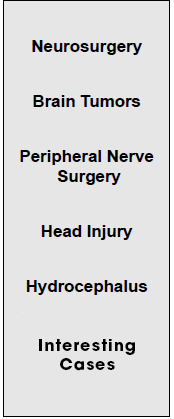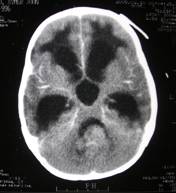
|
|
HYDROCEPHALUS

Hydrocephalus is a condition wherein there is “water in the brain.” Because excess water exerts pressure on the brain, the patient may develop symptoms such as headache and vomiting, increased sleeping time, and difficulty walking, among others. Hydrocephalus has many causes. In children, the most common type is congenital hydrocephalus wherein the baby is born with the condition and exhibits a large head. In older patients, the hydrocephalus may de due to obstruction of the water pathways in the brain due to a tumor or blood clot. Infections (such as meningitis) and subarachnoid hemorrhage (diffuse blood from a ruptured aneurysm) may also cause hydrocephalus.
Hydrocephalus is almost always treated with surgery. If there is a mass lesion such as a tumor causing the hydrocephalus, removing the tumor may be enough to treat the problem. In cases where there is no mass lesion, inserting a VP shunt (ventriculoperitoneal shunt) is another form of surgical treatment. The VP shunt allows the water to be “bypassed” from the brain into the abdominal cavity, where it is absorbed. In selected cases, a procedure called an ETV (endoscopic third ventriculostomy) may relieve the hydrocephalus.
|